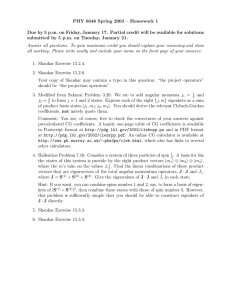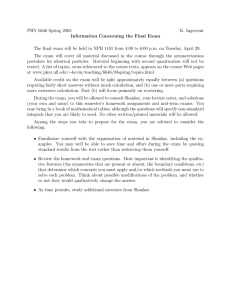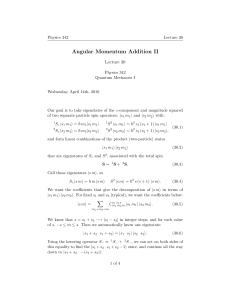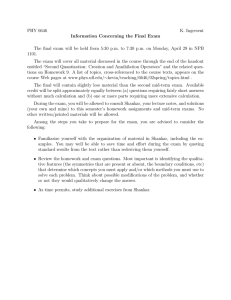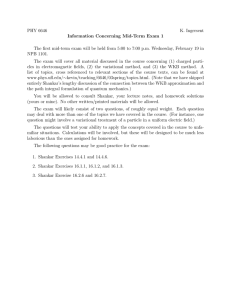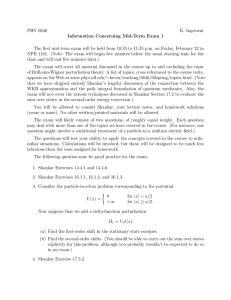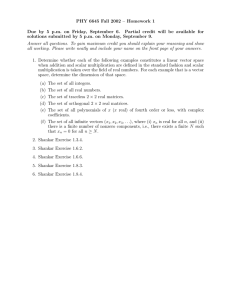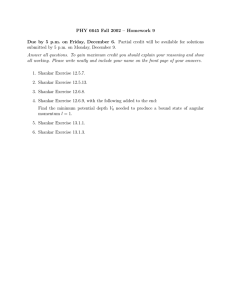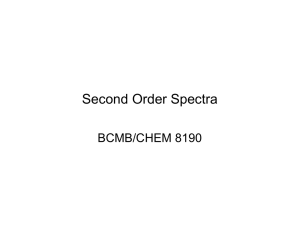PHY 6645 Fall 2001 – Homework 10
advertisement
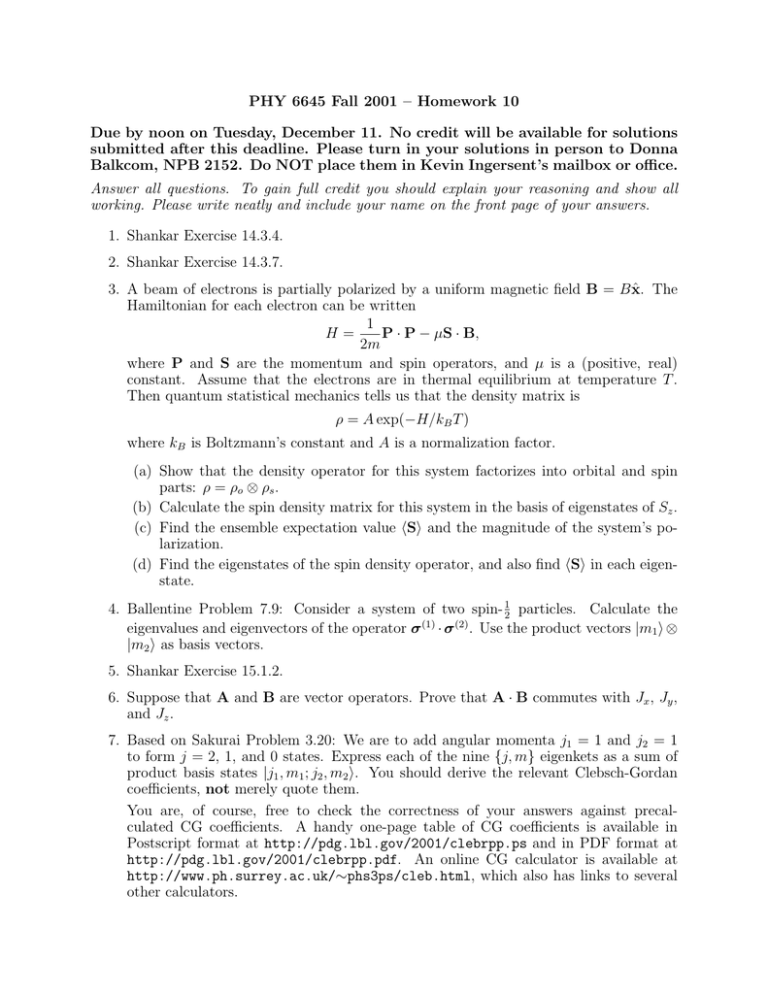
PHY 6645 Fall 2001 – Homework 10
Due by noon on Tuesday, December 11. No credit will be available for solutions
submitted after this deadline. Please turn in your solutions in person to Donna
Balkcom, NPB 2152. Do NOT place them in Kevin Ingersent’s mailbox or office.
Answer all questions. To gain full credit you should explain your reasoning and show all
working. Please write neatly and include your name on the front page of your answers.
1. Shankar Exercise 14.3.4.
2. Shankar Exercise 14.3.7.
3. A beam of electrons is partially polarized by a uniform magnetic field B = B x̂. The
Hamiltonian for each electron can be written
1
H=
P · P − µS · B,
2m
where P and S are the momentum and spin operators, and µ is a (positive, real)
constant. Assume that the electrons are in thermal equilibrium at temperature T .
Then quantum statistical mechanics tells us that the density matrix is
ρ = A exp(−H/kB T )
where kB is Boltzmann’s constant and A is a normalization factor.
(a) Show that the density operator for this system factorizes into orbital and spin
parts: ρ = ρo ⊗ ρs .
(b) Calculate the spin density matrix for this system in the basis of eigenstates of Sz .
(c) Find the ensemble expectation value hSi and the magnitude of the system’s polarization.
(d) Find the eigenstates of the spin density operator, and also find hSi in each eigenstate.
4. Ballentine Problem 7.9: Consider a system of two spin- 12 particles. Calculate the
eigenvalues and eigenvectors of the operator σ (1) · σ (2) . Use the product vectors |m1 i ⊗
|m2 i as basis vectors.
5. Shankar Exercise 15.1.2.
6. Suppose that A and B are vector operators. Prove that A · B commutes with Jx , Jy ,
and Jz .
7. Based on Sakurai Problem 3.20: We are to add angular momenta j1 = 1 and j2 = 1
to form j = 2, 1, and 0 states. Express each of the nine {j, m} eigenkets as a sum of
product basis states |j1 , m1 ; j2 , m2 i. You should derive the relevant Clebsch-Gordan
coefficients, not merely quote them.
You are, of course, free to check the correctness of your answers against precalculated CG coefficients. A handy one-page table of CG coefficients is available in
Postscript format at http://pdg.lbl.gov/2001/clebrpp.ps and in PDF format at
http://pdg.lbl.gov/2001/clebrpp.pdf. An online CG calculator is available at
http://www.ph.surrey.ac.uk/∼phs3ps/cleb.html, which also has links to several
other calculators.
